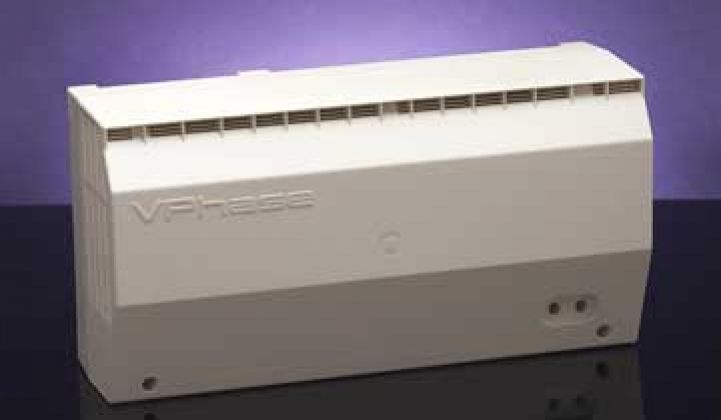VPhase has a few things going for it that the average company promising to save you money on your energy bill does not.
For starters, when you go to the website for the company, it suggests that maybe you landed on its website because you saw it mentioned on TV. I can’t remember the last time I saw a home energy management system pitched in a 30-second spot during reruns of Everybody Loves Raymond -- probably because there is no “As Seen on TV” when it comes to home energy displays.
Furthermore, the U.K.-based VPhase isn’t a home energy management company at all. Instead, VPhase adjusts the voltage coming into the home at a circuit level to deliver energy savings.
VPhase was one of the winners of General Electric’s Ecomagination Home challenge. It was the only winner hailing from outside of the U.S. and surprisingly, it was one of the few that features a pure-play residential solution. Voltage management has been used for a long time in the commercial and industrial sector, but Rick Smith, CEO of VPhase, said that the technology translates well to homes once they were able to find a cost-effective solution.
“It’s like slowing down a faucet,” said Smith. The average home in the U.K. can save between 8 percent and 10 percent on the electric bill simply by adjusting the voltage down on fuses that are connected to appliances from central heating pumps to refrigerators.
The technology monitors the voltage, which can vary between 216 and 253 volts in the U.K. Smith says the average is about 245V coming into the house, even though every appliance has to be able to operate at the lower end of the spectrum. (For more detail about the European market, check out GTM Research's latest report, The Smart Grid in Europe 2012-2016: Technologies, Market Forecasts and Utility Profiles). The VPhase, developed in conjunction with Liverpool University, utilizes the same principle as noise-cancelling headphones to balance the voltage to 220V.
The patented technology means that industrial voltage optimization companies cannot enter the residential space as easily, according to Smith. The patent is likely the reason for GE’s interest in the company, although the partnership is still in its early days.
Currently, the young company is selling through utilities, independent electricians, social housing groups and residential PV installers. VPhase worked with Scottish and Southern Energy to help develop zero-carbon homes and has been awarded carbon credits under Ofgem, the British government’s Office of the Gas and Electricity Markets.
Electricity rates have risen in the past year in the U.K, so some utilities are looking into VPhase as a way to do something extra for their customers, says Smith. British Gas, for instance, has signed a Memorandum of Understanding. Smith estimates that the VPhase is currently in about 3,000 homes.
Although some customers are seeing up to 12 percent savings, and a few have seen even more -- it is difficult to wring more energy savings out of the system. Heating systems are not usually connected because people don’t want it to take longer to heat their homes, and so one of the largest electricity hogs in the house is not curbed by the VPhase.
The cost varies depending on the sales channel, but Smith said it averaged about £300, which includes installation and taxes. At that cost, the payback for the average U.K. home would be multiple years. Other competitors, like VO4Home, have similar savings.
The technology could fit anywhere where there’s a 220-volt/50-hertz standard, including Australia, Europe and South Africa, to name a few. Eventually, Smith said it could also be modified for the U.S. market. But for now, VPhase is just looking to shore up its position in the U.K. “You can’t stretch resources overseas until you’ve secured your home market,” Smith said. “We’re all about proving we’re a viable and valid technology."



